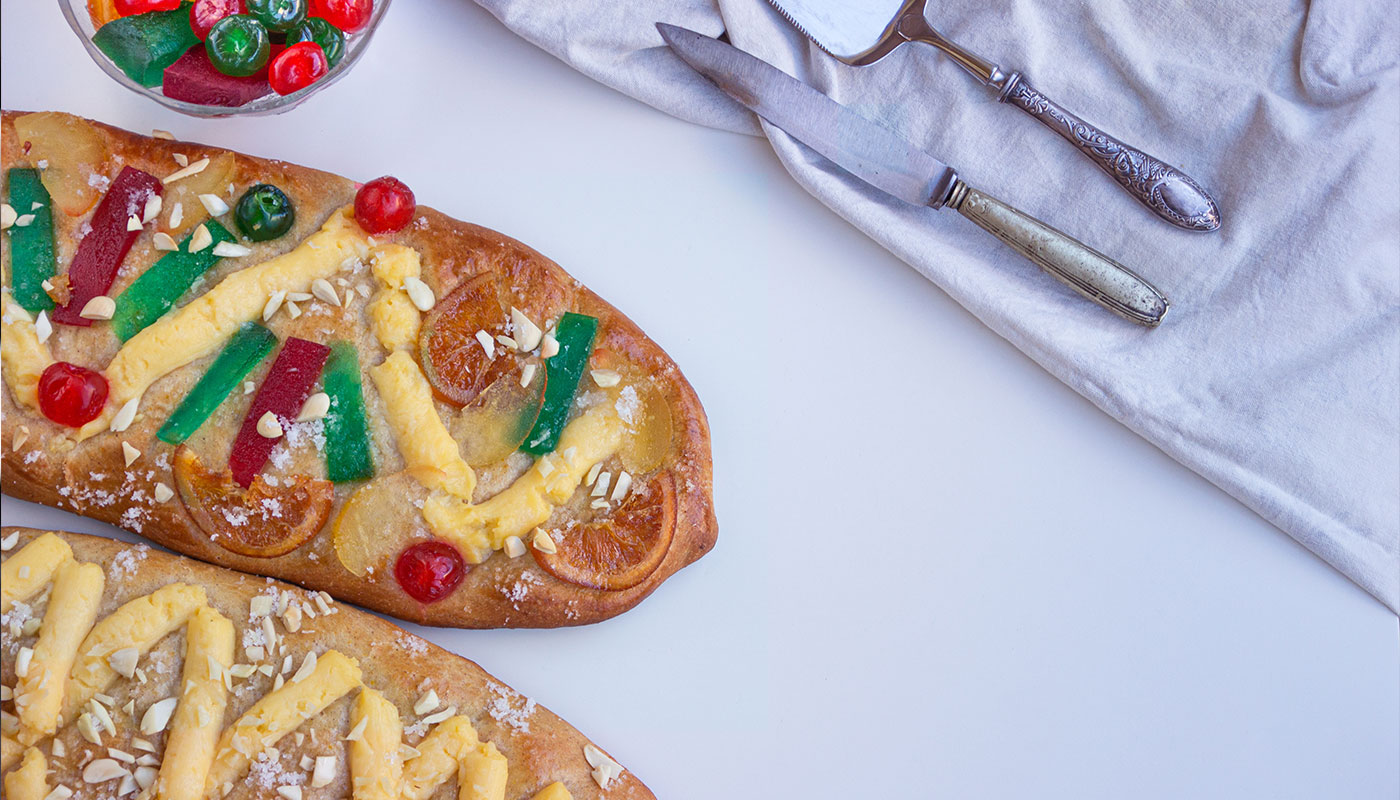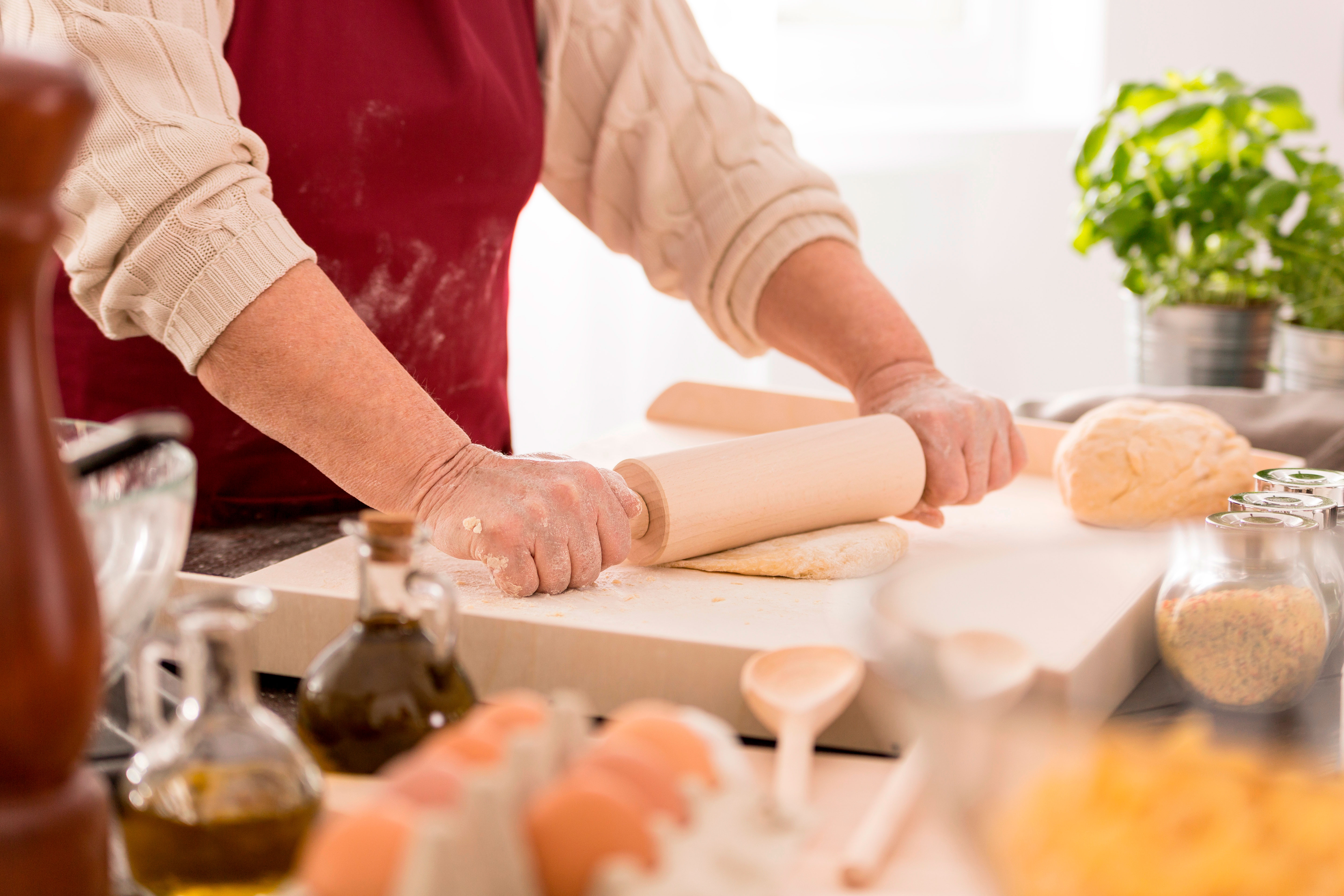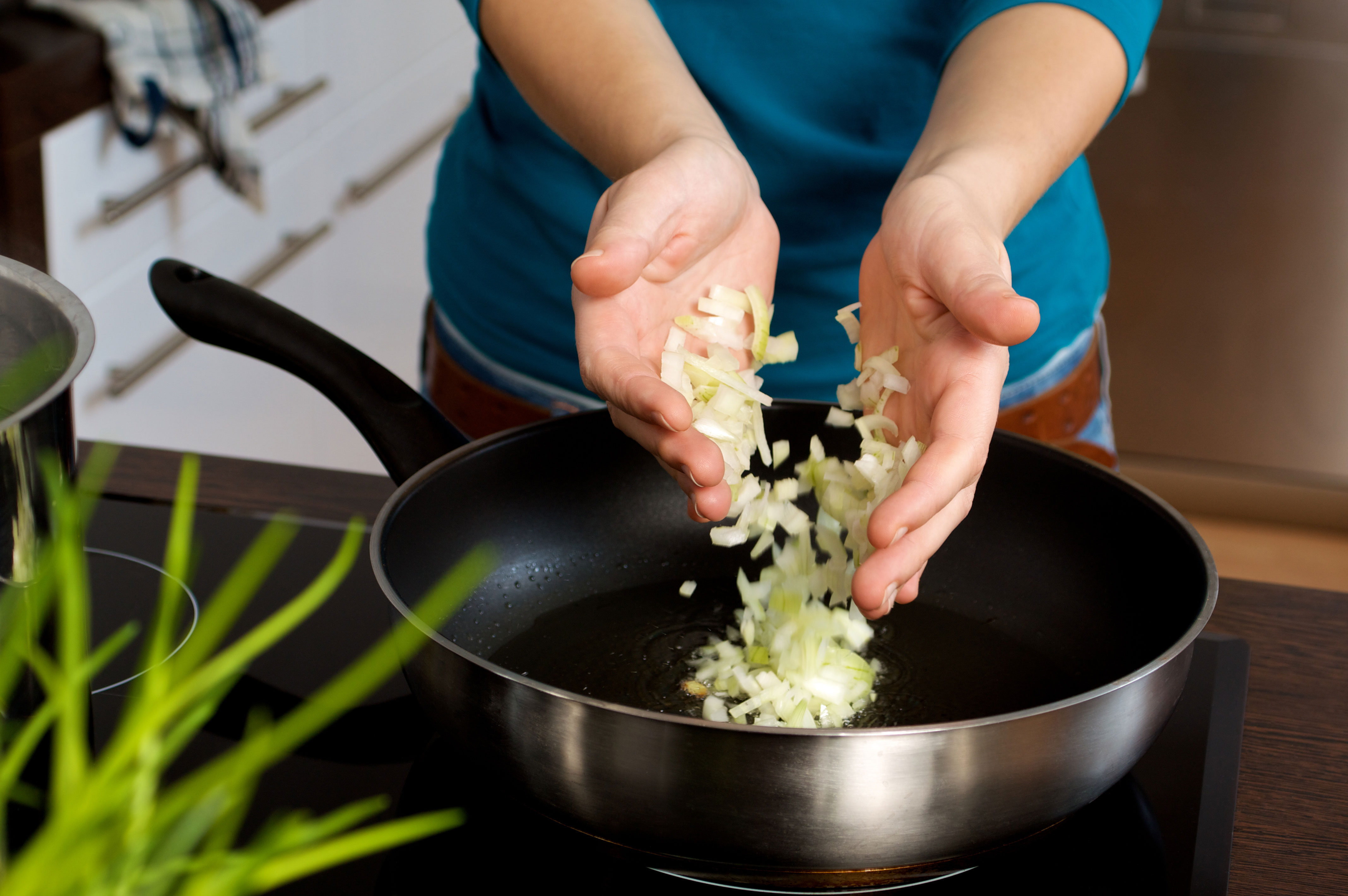St John’s cake: a delicacy to enjoy
St John’s cake is a very popular dish to enjoy on the evening ofSt John’s day. With just a few ingredients, you will have thisdelicious recipe made and ready to share.
on today's menu
Share

The 24th of June has a name: San Juan. This festival is the official start of the summer and, to celebrate it, on the night before the beaches of the Mediterranean coast are filled with bonfires and wishes. But there are not only rites associated with this date, there are also delicious dishes that celebrate the arrival of the summer and pay homage to this feast day, one of these is St John’s cake.
However, St John’s cake is not the same everywhere. While in Catalonia this dish resembles the ring-shaped Reyes Cake and is therefore sweet, in Alicante you will usually find a very different cake and, in this case, it is savoury. However: both are perfect for enjoying on one of the most symbolic nights of the year. The following recipes will help you to make a perfect St John’s cake (and much more).
Let’s start with the sweet version. The Thermomix St John’s cake is very easy to make and can be adjusted to taste: with glazed fruit, almonds, chocolate, angel hair (candied spaghetti squash), crème patisserie or cream… It all depends on your appetite and the diet being followed, although, it has to be said that few people can resist a home-made St John’s cake.
For the crème patisserie, you will need:
- 500 g whole milk
- 20 g butter
- 40 g Maizena (cornflour)
- 3 eggs
- 110 g sugar
- 1 spoonful of sugar with vanilla
For the dough you will need to use:
- 140 g whole milk
- 25 g fresh yeast
- 550 g strong flour
- 2 eggs
- 1 egg yolk
- 80 g butter
- 10 ml orange flower water
- 100 g sugar
- Orange zest
- Lemon zest
- 65 ml sunflower oil
The steps for preparing our St John’s cake are as follows:
1. Start by making the crème patissiere. To do this, put all the ingredients, except for the butter, into the Thermomix beaker and programme it for 7 minutes at a temperature of 90 degrees and at speed 4.
2. Then, add the butter and mix it for 5 seconds at speed 3.
3. Tip the mixture out into a container, cover with cling film and let it cool.
4. For the dough, use the Thermomix beaker again and the lid (which you will need to wash beforehand to remove any remaining crème patissiere). First, put the sugar in and programme for 20 seconds at a progressive speed of 5-7-10. Then add the orange and lemon zest and programme for 30 seconds at a progressive speed of 5-7-10.
5. Scrape the remains from around the sides of the beaker and then add the eggs, the butter (it is worth heating it up for a few seconds to soften it), the oil, the milk, the crumbled yeast and the orange flower water. Mix for 4 seconds at a speed of 3, and then programme for 2 minutes at a temperature of 37 degrees and a speed of 2.

6. Add the strong flour and mix for 4 seconds at a speed of 6. Once this has been done, programme for 2 minutes at ear of wheat speed.
7. Let it rest inside the beaker so that the dough ferments and doubles in size, which may take around one and a half hours.
8. Then it’s time to work the dough. On a countertop, on top of greaseproof paper, start shaping the rectangular cake. A rolling pin may help with this.
9. The next (fun) step is the decoration. With the help of an icing bag, trace a grid shape over the surface of the dough with the crème patissiere. Decorate with almonds and let it rest for around 20 minutes.
10. Pre-heat the oven to 180 degrees and place a container with water inside it.
11. Once the oven is heated, insert the tray with the dough and bake it at 180 degrees for 20 to 25 minutes approximately.
12. When this time has passed, take out the delicious Thermomix St John’s cake and let it cool. Yum yum!
Alternatively, if you want to prepare a traditional Alicante St John’s cake, that is, the «coca amb tonyina», you will need to change your recipe. For this you will need:
- 500 g strong flour
- 1 kg chopped onion
- 250 g tuna loin (or “sorra” tuna)
- 30 g pine kernels
- 125 ml water
- 50 ml dry anis liqueur
- 250 ml extra virgin olive oil
- 1 spoonful of sweet paprika
- 1 spoonful of chopped parsley
- Ground black pepper to taste
- 1 egg
- Salt
And for the steps:
1. First, put the oil in a deep frying pan. When it is hot, add the onion. Add a little salt and let it cook on a medium heat for around 20 minutes until it is soft.

2. Drain the onion into a bowl to separate it from the oil, which you will use later for the dough. If more oil is needed, it can be added later.
3. Tip the onion into a larger container and add the parsley, tuna, a little of the black pepper and the pine kernels. Mix everything together and leave it to one side until required.
4. To prepare the dough, place the oil in a saucepan and add water, the dry anis liqueur, and a spoonful of sweet paprika. Mix everything a little and wait for it to begin boiling. When this occurs, add a little salt (just a little, as the tuna will already be salted) and then pour the oil onto the flour and stir until all the ingredients are mixed together and the dough can be handled.
5. Divide the dough into two pieces and stretch these. Place the first piece on greaseproof paper and roll it out with a rolling pin until it takes on a rectangular shape (and is around 3 millimetres thick).
6. Once it is trimmed into the shape you want, place it on an oven tray and repeat the same procedure with the other piece of dough (there is no need to make it quite as thin as it will have to cover the mixture).
7. Fill the cake by spreading the ingredients evenly without getting too close to the edges, and cover it with the second piece of dough, accommodating it as well as you can. Pinch the edges closed with a fork so that it bakes well, and brush with beaten egg to give it a golden appearance.
8. Put the cake into the oven at 190 degrees for between 30 and 50 minutes with heat from above and below. When it looks golden, it’s ready!
Gluten-free St John’s cake for coeliacs
Can you make a gluten-free St John’s cake? All you need to do is substitute the flour for gluten-free flour. Make a note of what you will need:
- 225 g gluten-free flour
- 75 g sugar
- 25 g butter
- 25 ml oil
- 50 ml milk
- 2 eggs
- 5 g dried yeast
- 1 lemon zest
Alternatively, for the dough you will need to use:
- 35 g dry yeast
- 50 g buckwheat
- 50 g gluten-free flour
- 1 teaspoon sugar
- 150 ml milk
For the filling and the top, all you will need is:
- 30 g pine kernels
- 330 ml whipping cream
- 1 egg
- 1 tablespoon sugar
And, lastly, the steps:
1. Firstly: prepare the starter. Heat up a little milk and put it in a bowl, add a teaspoon of sugar and sprinkle on the yeast. Stir it well and leave it for a few minutes until the yeast has activated.
2. Then, add the rest of the ingredients to the starter (the flour and the buckwheat), mixing it well with a whisk, and leave it to rest for some 30 minutes for the starter to double in size.
3. Once the starter dough is ready, put all the ingredients into a bowl for the main dough, except for the butter which should be melted before it is added, and mix everything together with the starter dough.
4. When you can see that it has become an even dough (that you can easily work with your hands), place it on a table surface sprinkled with flour.
5. Using a rolling pin, roll out the dough until you have the desired shape.
6. Let the dough rest for between one and a half or two hours until it is well risen.
7. Then, using a brush, brush the cake with beaten egg and sprinkle with sugar and pine kernels.
8. Pre-heat the oven to 180 degrees and bake the cake for some 35-40 minutes.
9. Once it is cooked and it has cooled, slice it in half and fill with cream (which has been previously whipped with sugar), and voilà!






